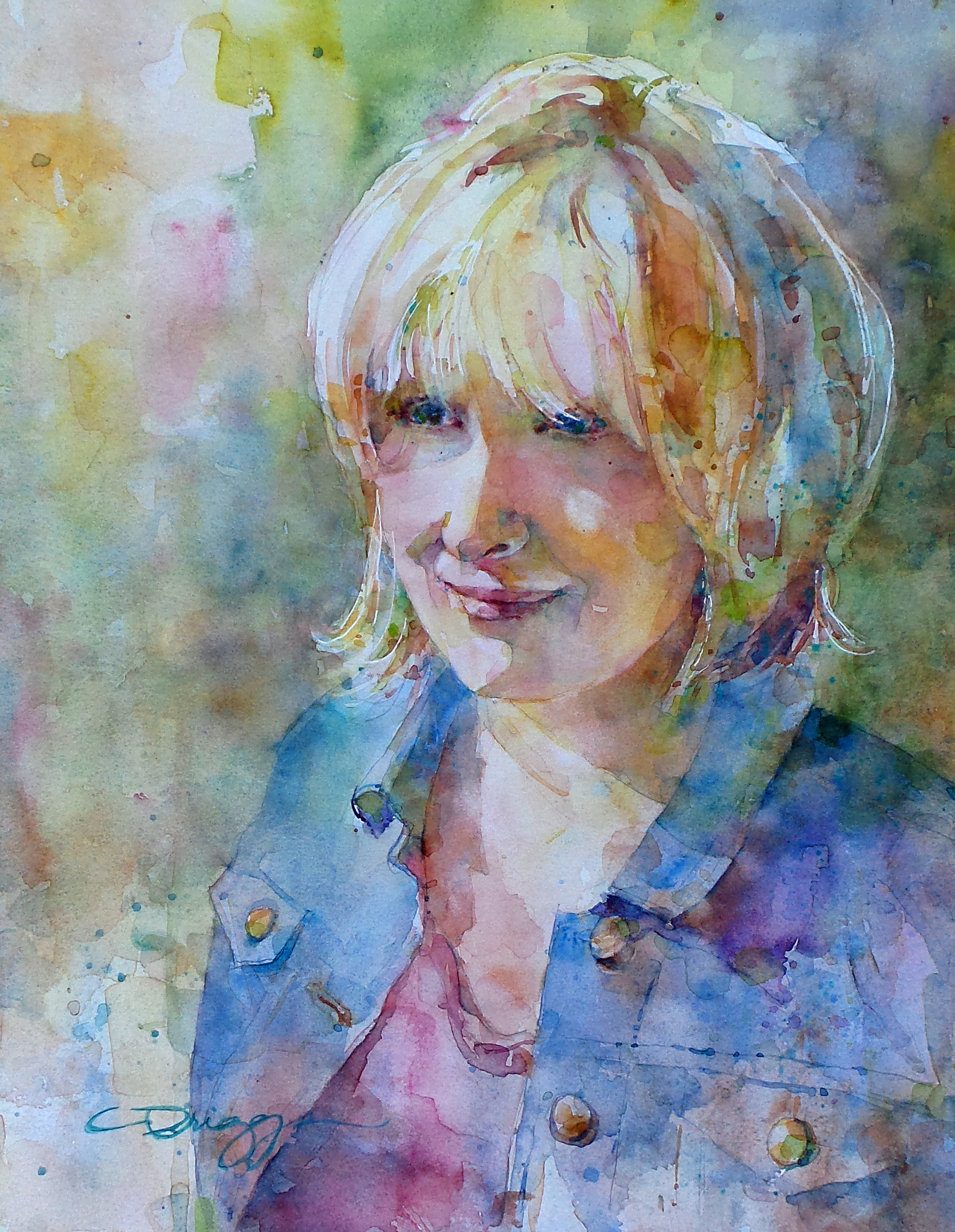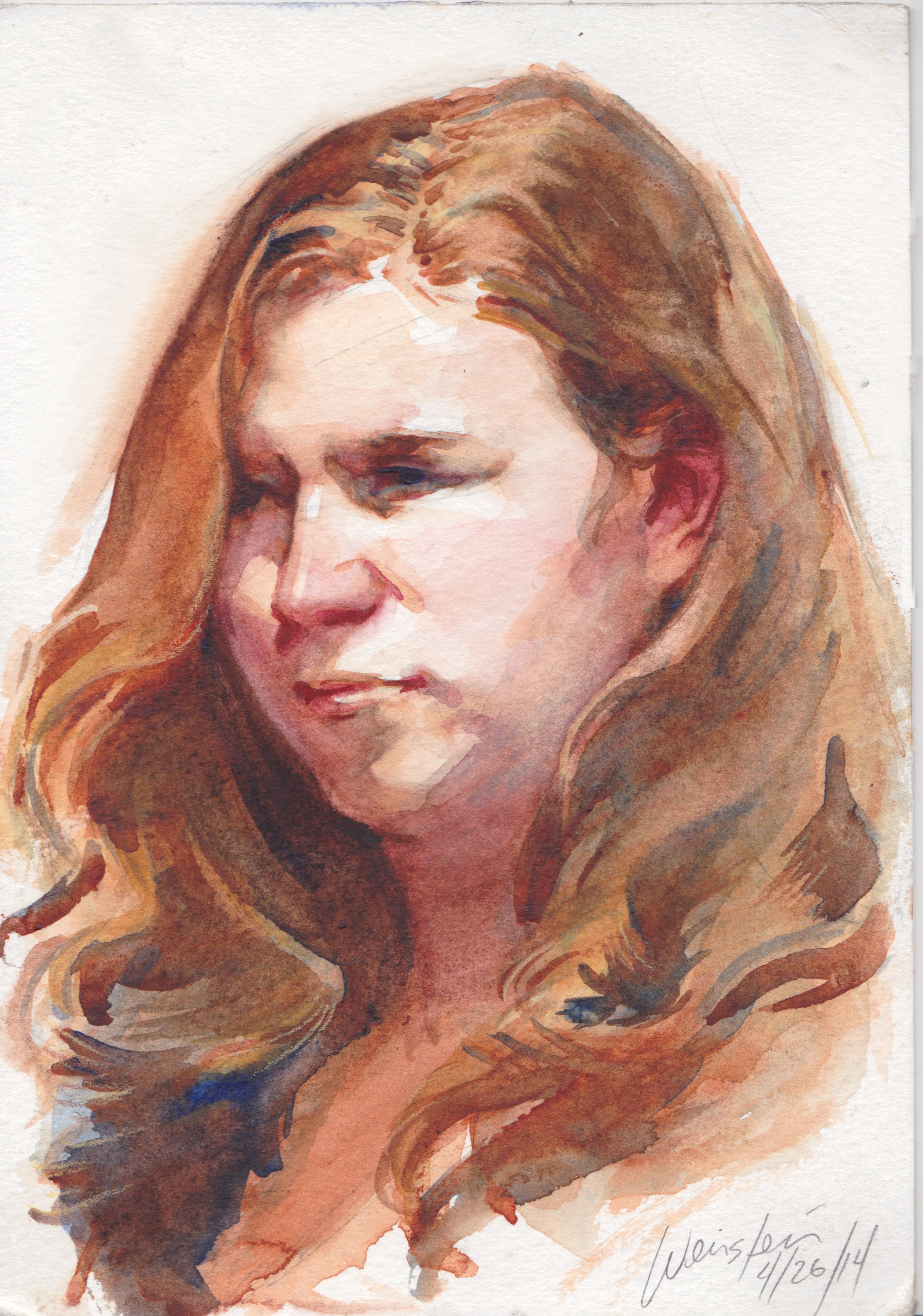

Her approach is to try things and allow herself to get a little frustrated if something doesn’t work.
#Watercolor portraits trial#
It’s a process of trial and error,” she says. “Right now, I’m slowly building up this library of knowledge as far as the materials I use. The surface is similar to hot-pressed paper, she says, although recently she’s started to gesso over raw canvas, and that surface is a little rougher and more absorbent. I want them to have this raw quality where they’re just in the room, not framed behind glass. Plus, I don’t want my watercolors to be formal. I’m not patient enough to figure out the logistics of matting and framing paper. It was incredible finding out about watercolor gesso. “Painting on canvas rather than paper is how I’m able to paint so large. The Guitar Tuner(watercolor on gessoed canvas, 48×36) by Melanie NorrisĬreating in this way is technically freeing, Norris says. I lay paint down and it flows, then I use the angle of the brush to shape it a little bit once it reaches a certain point.” These brushes work for me and the way I use watercolor. “I use cheap brushes not necessarily made for watercolor,” she says. Not challenging the viewer by looking at us or by looking away.”įor a large painting like The Receiver, Norris puts the canvas on the floor and literally stands over it to work, using large, flat, angled brushes.

I wanted to show the subject, who happens to be my husband, just receiving.

It was a pose, she says, that “just came to me. “Then I went to 36 inches square, then to 48 inches square, and finally to 60×48 inches for The Receiver.” This final painting, what Norris calls the capstone of the series, “exploded” onto the canvas. “The first paintings I did in ‘Tinkers’ were 24×36-ish,” she says. The watercolor portraits in “Tinkers,” she says, grew in size as she got more comfortable with the idea of the series.
#Watercolor portraits series#
The artist paints her portraits on canvas primed with watercolor gesso in a variety of sizes, and often builds to larger and larger sizes as a series progresses. The Receiver (watercolor on gessoed canvas, 60×48) by Melanie Norris If I’m trying something new, or if I’m not confident with what I’m doing, I’ll often just paint myself instead of someone else.” “In a horrible way, I’m manipulating a subject’s physical shell for my own ideas, so people sometimes are hesitant to let me paint them. “I’m painting whatever’s in my head at the time,” Norris says. This means that finding models can be tricky. Calling All CharactersĪlthough she admires beautiful language and imagery, Norris is quick to admit that in her personal work (as opposed to commissioned portraits), she doesn’t set out to paint subjects in a particularly flattering way. “Society has become very explicit, and even crude in a way.” In a sort of counterweight to this trend, Norris employs a restraint similar to Harding’s - in her “Tinkers” series and other work - providing just enough of a physical representation to glimpse the underlying character of her subject. “There’s a beauty in not saying everything, not putting everything out there,” she says.

That resonates with me stylistically.” Norris’s watercolor portraits follow suit. “In Tinkers, the writing is incredibly visual the author doesn’t need to be explicit. “I’m a bookworm,” says Melanie Norris, explaining the influence of Paul Harding’s 2009 novel Tinkers on her painting series of the same name. Light(watercolor on gessoed canvas, 30×30) by Melanie Norris


 0 kommentar(er)
0 kommentar(er)
